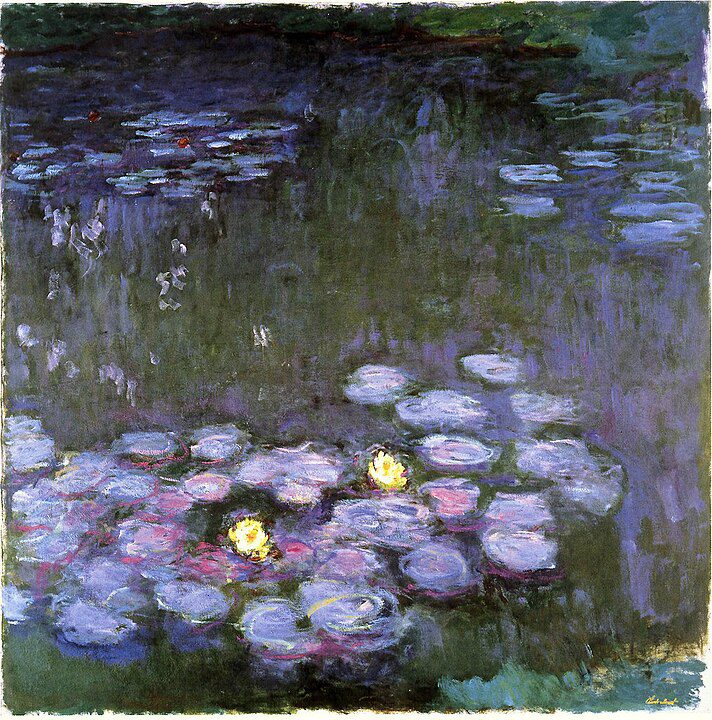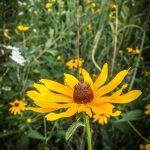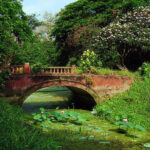
Claude Monet’s garden in Giverny, France, famously served as the inspiration for his iconic Water Lilies series. Visitors to this stunning location are greeted by a tranquil pond filled with water lilies and surrounded by lush, verdant landscapes, almost appearing like a painting itself. But beyond its picturesque beauty, Monet’s pond is teeming with life. The flora and fauna of this pond have developed into a delicate ecosystem, housing a wide array of wildlife that contributes to the garden’s ecological balance and artistic allure. This article explores the real-life wildlife that flourishes in Monet’s Water Lily Pond, offering a deeper appreciation for the natural world that inspired one of the greatest painters of the 19th century.
The Origins of Monet’s Water Lily Pond: A Brief Background
Claude Monet, one of the pioneers of Impressionism, moved to Giverny in 1883. Over the years, he meticulously designed and cultivated his garden, which became a cornerstone of his creative output. Monet constructed the water lily pond in 1893 by diverting a small branch of the Epte River, shaping the pond to reflect his artistic vision. The pond itself, although a man-made addition, soon developed its own ecosystem. This transformation brought various species of plants, fish, birds, and insects that now inhabit the pond and its surroundings, forming an essential part of its natural allure.
The Flora of Monet’s Pond: More Than Just Water Lilies
While Monet’s pond is celebrated for its iconic water lilies (Nymphaea), a closer look reveals a diverse variety of plant species that play a vital role in maintaining the pond’s ecosystem. Monet planted several types of water lilies, including the white Nymphaea alba, pink Nymphaea odorata, and even tropical varieties that bloom in various colors. These plants serve as the main attraction, covering the pond’s surface with vibrant, floating pads and delicate blossoms that open and close with the sun’s cycle.
Alongside water lilies, reeds, cattails, and other aquatic plants thrive along the pond’s edges. These plants create essential shelter and breeding grounds for fish and insects, contributing to the pond’s biodiversity. Willow trees and bamboo groves encircle the pond, their overhanging branches casting delicate reflections in the water, which Monet loved to capture. These terrestrial plants, while not rooted in the pond, add to the habitat’s complexity by providing perching and nesting spaces for birds and insects.
Aquatic Wildlife: Fish of Monet’s Pond
Beneath the still surface of Monet’s pond, a variety of fish create a hidden world of movement and color. Carp, often associated with Japanese gardens, are among the most noticeable residents. These fish are relatively large, often with striking colors, and swim gracefully among the water lilies, adding a subtle vibrancy to the pond’s underwater ecosystem. Goldfish also inhabit the pond, bringing flashes of orange and red to the water.
These fish not only add visual appeal but play an important role in the pond’s ecological health. They help control insect larvae, especially mosquitoes, keeping the insect population balanced. Fish waste also provides nutrients that benefit the pond’s plant life, fostering a cyclical nutrient flow essential to the ecosystem’s overall health.
Insects of Monet’s Water Lily Pond: Essential Tiny Residents
The insect population around Monet’s pond is bustling with activity, often playing a dual role in both pollination and as a food source for larger animals. Dragonflies and damselflies are among the most prominent insects visible around the pond. Known for their iridescent bodies and rapid, darting flight patterns, these insects are especially prevalent in summer months. They play a key role as both pollinators and predators, keeping mosquito populations in check.
Butterflies, too, add to the visual splendor of Monet’s garden, flitting from flower to flower. Species like the European peacock butterfly and the cabbage white are common, attracted to the diverse array of flowering plants in the surrounding garden. Meanwhile, bees and other pollinators are drawn to the flowers, facilitating the reproduction of plants and helping maintain the ecosystem’s delicate balance.
Birds in Monet’s Garden: Feathered Visitors of the Pond
The birdlife around Monet’s pond adds to the tranquil ambiance with gentle songs and flashes of color. Common bird species include the European robin, blackbird, and kingfisher. The kingfisher, in particular, is a striking sight with its vivid blue feathers, often seen darting across the water as it hunts for small fish. Sparrows, tits, and finches are also frequently spotted, contributing to a harmonious bird chorus that changes with the seasons.
Ducks occasionally visit the pond, especially mallards, which can be seen gliding across the water or dabbling among the reeds. These birds add a natural vibrancy to the scene that echoes Monet’s brushstrokes, transforming the pond into a living, breathing landscape. Birdsong fills the air throughout spring and summer, enhancing the sensory experience of the garden.
Amphibians and Reptiles: The Lesser-Known Inhabitants
Amphibians, such as frogs and toads, also find a welcoming home in Monet’s pond. The presence of amphibians indicates a healthy ecosystem, as they are sensitive to pollution and other environmental changes. Their croaking, especially during the mating season in spring, provides an auditory backdrop that complements the birdsong and adds another layer of natural music to the garden.
Frogs are particularly beneficial for the pond as they consume large quantities of insects. Tadpoles, the juvenile form of frogs, help keep algae levels in check, contributing to the clarity and health of the water. Although not as common, small reptiles like lizards can occasionally be spotted sunning themselves on the rocks near the pond, adding another element to the rich tapestry of wildlife in Monet’s garden.
Seasonal Changes in the Pond’s Wildlife
The ecosystem of Monet’s water lily pond is ever-changing, shifting with the seasons. In spring, the pond bursts to life with the blossoming of lilies, increased insect activity, and the arrival of migratory birds. Summer brings the peak of plant growth and insect populations, creating a vibrant, busy scene. Dragonflies and damselflies are most visible during these warmer months, and fish are highly active.
In autumn, the colors of the surrounding foliage reflect on the water, and some migratory birds begin to leave, while others prepare for winter. Aquatic plants start to recede, and wildlife activity slows as colder temperatures approach. Winter is a quieter time for the pond, with many animals hibernating or migrating. However, even during this time, the pond has a quiet, serene beauty, with the hardy plants and evergreen bamboo providing a still life for visitors.
Monet’s Inspiration from Real-Life Wildlife
Monet’s fascination with the natural world profoundly influenced his art. His water lilies are more than just a beautiful subject; they are a testament to his love for nature and his keen observation of life’s subtle details. He once said, “I perhaps owe having become a painter to flowers,” emphasizing the role of his garden in his work. Observing the vibrant colors, intricate patterns, and reflective qualities of the water and wildlife around him, Monet captured these elements with delicate brushstrokes and a masterful use of color.
Conserving Monet’s Garden and Its Ecosystem
Today, Monet’s garden is preserved and maintained by the Fondation Claude Monet. This organization works to ensure the ecological health of the pond and surrounding gardens, keeping the water clean and providing a habitat where wildlife can continue to thrive. They carefully manage plant growth and regulate visitor access to protect the fragile ecosystem. By maintaining the pond and its wildlife, the foundation preserves not only a significant cultural landmark but also a living tribute to Monet’s vision.
Conclusion: The Living Legacy of Monet’s Water Lily Pond
The wildlife of Monet’s water lily pond in Giverny represents a vibrant ecosystem that transcends its beauty as an artistic subject. Each bird, fish, insect, and plant plays a role in the ecological balance of the pond, creating a living tableau that has enchanted visitors and inspired artists for generations. Monet’s pond is more than just a garden; it is a sanctuary for wildlife and a place where art and nature coexist in harmony. Visiting this pond offers a unique opportunity to experience Monet’s inspiration firsthand, immersing oneself in a world where the natural and artistic blend seamlessly.
Key Takeaways
- Monet’s water lily pond in Giverny is a carefully constructed ecosystem housing diverse wildlife.
- The pond hosts fish, birds, insects, amphibians, and various plants, contributing to a balanced ecological environment.
- Seasonal changes bring different wildlife activities, highlighting the dynamic nature of the pond.
- Claude Monet drew deep inspiration from this natural beauty, which significantly influenced his famous Water Lilies paintings.
- Conservation efforts by the Fondation Claude Monet preserve the pond’s ecosystem and maintain its historical and artistic significance.
FAQs
- What types of fish live in Monet’s pond?
The pond hosts fish like carp and goldfish, which contribute to its ecological health. - Which birds are commonly seen around Monet’s water lily pond?
Common birds include robins, blackbirds, kingfishers, and occasionally, mallards. - Do frogs inhabit Monet’s pond?
Yes, frogs and other amphibians thrive here, indicating a healthy ecosystem. - What role do insects play in the pond’s ecosystem?
Insects like dragonflies and butterflies aid in pollination and control other insect populations. - Who maintains Monet’s garden today?
The Fondation Claude Monet preserves and manages the garden, ensuring its ecological and historical integrity.




